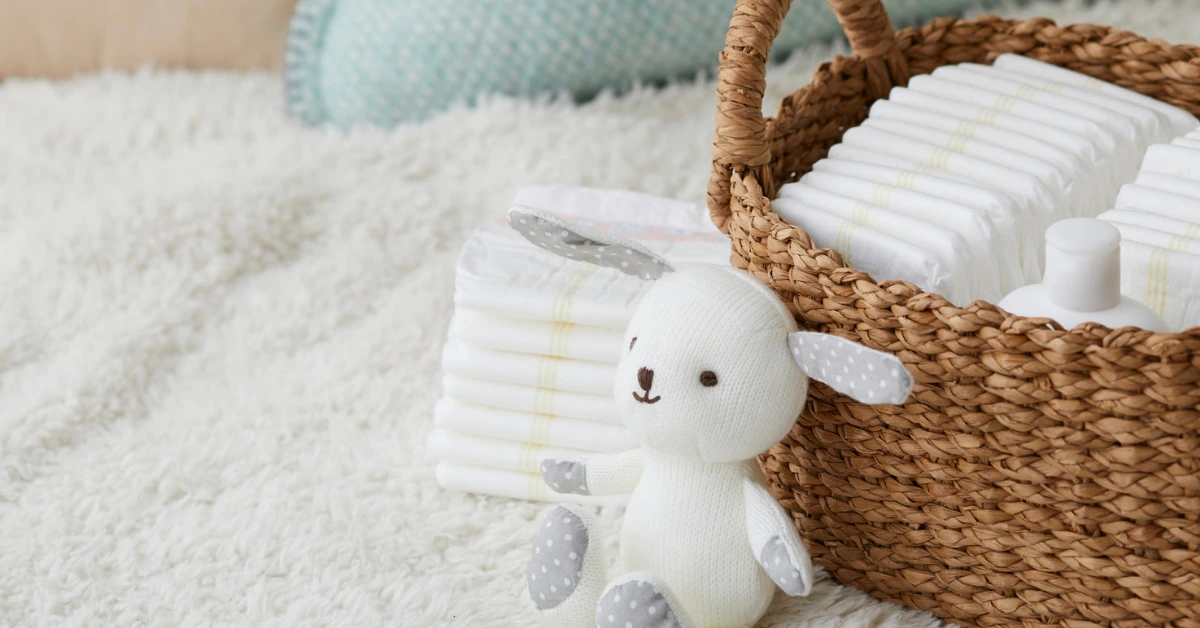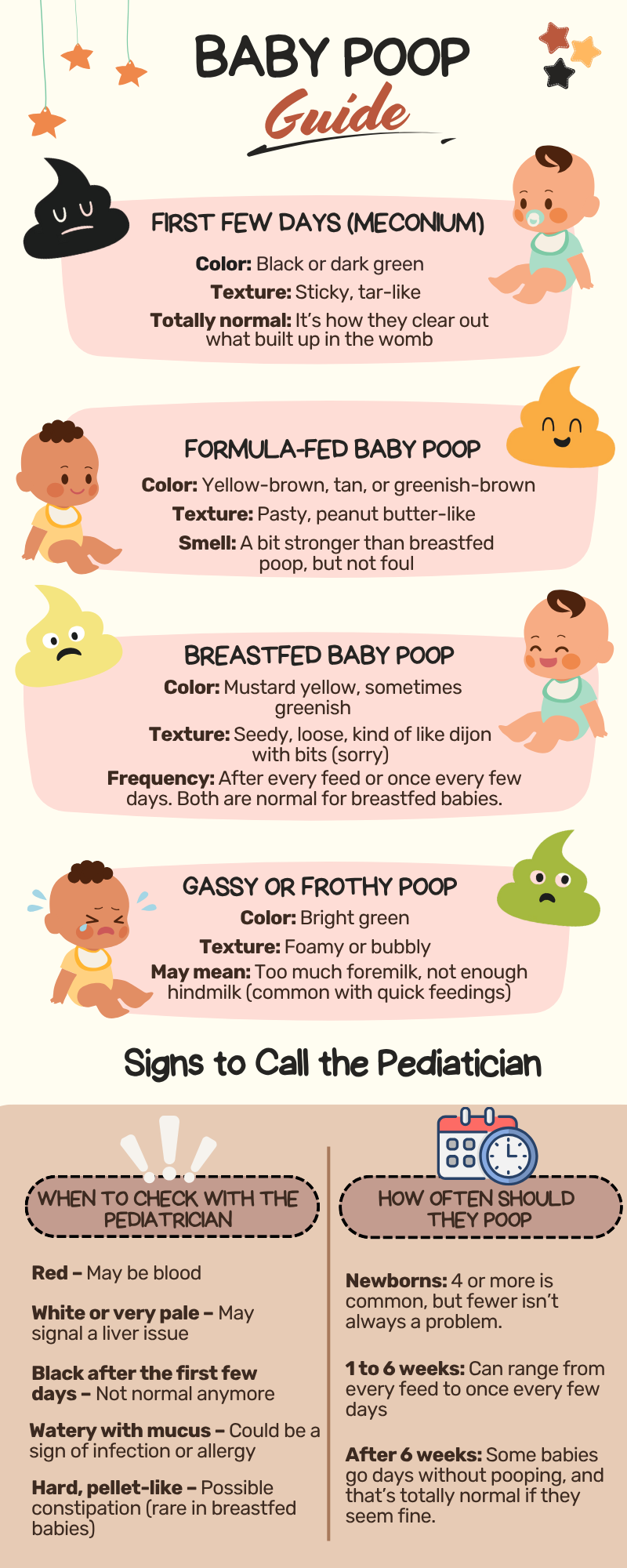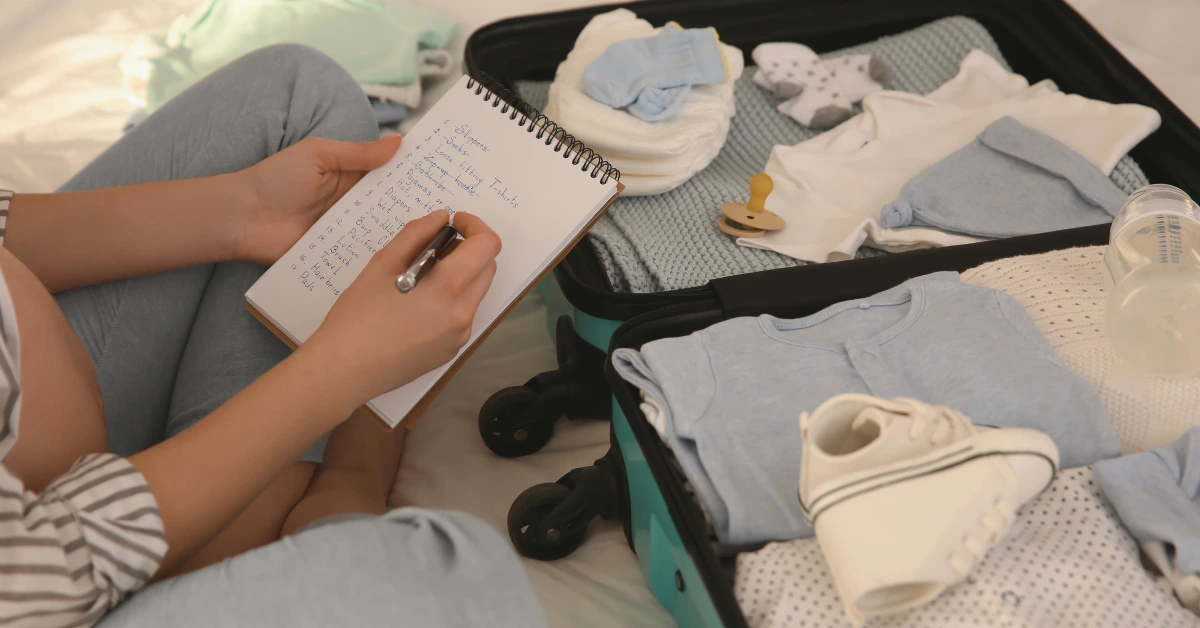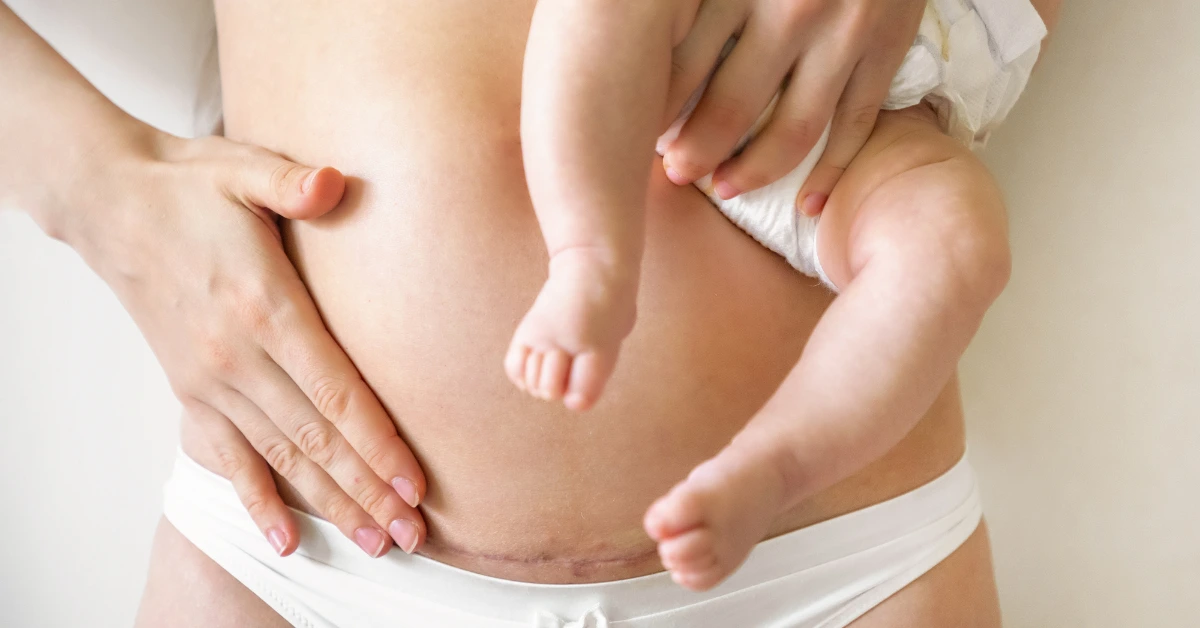Newborn Poop Colors: What’s Normal or Not for Baby

Newborn Poop Colors: What’s Normal and When to Worry
Nothing prepares you for how much time you’ll spend staring into a diaper. But when you’re trying to figure out newborn poop colors, it somehow becomes your full-time job. Me, you, and probably a stained onesie or two.
If you’ve ever opened a diaper and paused like, “What is that?” — welcome to the club. Baby poop goes through more color changes than a mood ring. Some of it’s completely normal. Some of it makes you wonder if you should be calling the pediatrician or cutting out dairy. I’ve been there. Here’s what actually helped me stop second-guessing every diaper change.
What to Expect in the First Few Days
Newborns come into the world full of surprises. Meconium is one of them.
It’s black, sticky, and looks like tar. Completely normal during those first few days. After that, your baby’s poop starts to change based on how they’re feeding.
- Breastfed? Expect yellow, seedy, sometimes runny poop.
- Formula-fed? More tan or greenish, and a bit thicker.
Both are fine. The color, texture, and frequency will all change as your baby grows (and as you start keeping wipes in every room of the house).
What Baby Poop Colors Actually Mean
Let’s keep it simple:
- Yellow – Normal for breastfed babies. It’ll look like mustard with little seeds.
- Brown or tan – Also normal, usually for formula-fed babies.
- Green – Can happen from iron, fast feedings, or even something you ate. Not usually a problem unless baby seems off.
- Orange – Also okay. It’s not from carrots. Don’t overthink it.
- Red – Could be blood. Call your pediatrician.
- Black – Fine during the meconium stage. If it comes back after that, call your pediatrician.
- White or chalky – Not normal. Could be a liver issue. Definitely call your doctor.
If you’re trying to make sense of newborn poop colors, this breakdown can save you a lot of panic-Googling.
Want a Quick Visual?
If you’d rather not scroll while holding a baby (relatable), I made a simple Baby Poop Guide you can download. It breaks down what’s normal, what’s not, and when to call the pediatrician — all in one page.
Real Questions About Baby Poop
Because I Asked Them Too...
Didn’t expect to become a diaper detective, but here we are. If you’ve got questions, you’re not alone. These were mine too.
What does green baby poop mean?
Green poop is typically nothing to worry about. It can show up if your baby is on iron-fortified formula, getting more foremilk than hindmilk during feeds, or if your diet has changed.
If your baby is eating well and seems fine, it’s likely normal. Call your pediatrician if it looks slimy or comes with discomfort.
When should I worry about baby poop color?
If you see white, red, or black poop after the first few days, it’s a good idea to call your pediatrician. Those colors can sometimes signal something serious.
Also, reach out if poop is always watery, greasy, or mucusy, especially with other symptoms like fever or poor weight gain.
Is black poop normal in newborns?
Yes, only during the first few days. That black sticky stuff is called meconium.
After that stage, black poop is not normal anymore and could mean digested blood. Always worth checking in with your doctor.
What does yellow seedy poop mean in newborns?
That’s usually breastfed baby poop, and it means things are moving along as they should. The texture might look weird, but it’s totally normal.
If the baby is feeding well and gaining weight, this is a good sign.
Why is my baby’s poop suddenly dark green?
Dark green can pop up after a formula switch, new vitamins, or changes in your milk supply. It can also mean your baby is getting more foremilk than hindmilk.
As long as the baby is happy and feeding normally, it’s not usually a cause for concern.
What color baby poop is considered unhealthy?
Here are the colors to watch for:
- Red can mean blood
- White could signal a liver issue
- Black poop after the newborn stage could signal internal bleeding.
If you see any of these, call your pediatrician. Knowing how to spot unhealthy newborn poop colors early can help you act fast if needed.
From One Poop Obsessed Mom to Another
It might feel a little ridiculous to care this much about what’s in a diaper, but when it’s your baby, you pay attention. You want to catch anything early, even if it means sending someone a poop photo with zero shame.
If something doesn’t feel right, call the pediatrician. That’s what they’re there for.
And in case no one’s told you today, you’re doing a good job, even if you’re deep in newborn poop colors Google results with one hand and holding a baby with the other.



